So I’m driving down the street in Surprise, Arizona and see some crazy-looking street person with long hair and beard to match, walking along wearing nothing but shorts and flip flops—the kind of guy who should be carrying a sign that says, “REPENT…THE END IS NEAR!”—and I’m thinking, “Jesus, what a freak” until I get close enough to recognize Danny Duffy.
And Danny’s a long way from the Kansas City Royals complex.
Danny really likes to walk and I later find out Danny sometimes walks from downtown Kansas City to Kauffman Stadium and doesn’t mind making the walk in flip-flops.
Danny’s one of those “marches to the beat of his own drummer” types assuming the drummer is Keith Moon.
Later, I run into Danny in the Royals clubhouse and ask what’s up the hair and beard; a look he calls “John the Baptist” and I call “Grizzly Adams.” (I’m at that age where I have vivid memories of bad TV shows from the seventies and no idea where I left my car keys.)
I ask Danny if he’s going to keep the hair and beard for Opening Day and then encouraged him to go full ZZ Top. I don’t know if the league will let Danny pitch with a flowing beard while wearing Ray Bans, but I’d pay good money to see it.
The next person I run into is Mike Moustakas.
Moose is sitting on a clubhouse couch eating a burrito and watching a spring training game on TV. We exchange stories about what we did over the winter and talk about families.
In 2014 Moustakas had some big hits in the postseason, but a miserable regular season; Mike needs to have a good year in 2015 if he wants to stay in the Big Leagues.
After my visit with Mike I walk out the clubhouse door and head for the practice fields and run into outfield and base-running coach, Rusty Kuntz. This season Rusty has an apprentice, former Royals outfielder Mitch Maier.
Don’t let reporters tell you that they don’t have favorites or care whether the team they’re covering wins or loses; if they’ve been around long enough to figure out what’s what and develop opinions, that’s bullshit.
It sounds good—reporters want to appear unbiased—but the truth is it’s a whole lot easier and way more fun to cover a winner; the players are in a good mood and more fans want to read about the team. Also, some people are easy to talk to and Rusty and Mitch Maier are very easy to talk to.
After the 2014 season ended, Rusty told me he wasn’t coming back to Kansas City; he wanted to go back to the minors and instruct—but here he is. So I ask Rusty what’s up with that and he says he won’t be leaving the Big League club until he trains Mitch to replace him.
“Well, if you’re going to teach Mitch everything you know, you’re going to be here another decade.”
Rusty knows a lot of baseball; he positions the outfielders, breaks down video to help the base stealers and serves as the first base coach during games. I ask Mitch what Rusty has taught him so far and Mitch (who has a very dry sense of humor) says they had to set up a pitching machine:
“Rusty taught me how to turn on the generator.”
OK, maybe Rusty’s going to be here another decade-and-a-half.
Mitch Maier—2010
It’s 2010 and Mitch is playing for the Royals. Somehow, both he and Yuniesky Betancourt wind up standing on third base. It’s pretty much industry standard to only have one base runner per base, so one of the players on the other team tags both Yuni and Mitch; someone has to be out.
According to the seldom-read rule book, the lead runner (Mitch) has the right to the base, the trail runner (Yuni) is out.
But Mitch leaves the base and starts jogging across the infield to the first base dugout. About halfway there Mitch realizes Yuni has been called out, not him; so Mitch makes a right turn and heads for home plate.
Royals fans are treated to a bang-bang play at the plate when Mitch tries to score from the pitcher’s mound. Mitch is safe on the play, but called out for leaving the base path.
How can you not love this guy?
Mike Moustakas—2015
It’s still my first day of spring training and that afternoon I wander out to the Royals practice fields to watch batting practice. If you pay attention and know what to look for, you can learn a lot from watching BP.
Dumb players use batting practice to play Home Run Derby, smart players use batting practice to improve their game.
If a middle infielder is swinging for the fences in BP don’t be surprised if he does it in a game. And if those BP swings are producing warning track fly balls, don’t be surprised if the guy takes an 0-fer that night. And if he takes enough 0-fers, don’t be surprised if that middle infielder winds up playing somewhere else.
And if you watched batting practice you could see it coming a mile away.
BP is done in groups; one group hitting, one group shagging and one group getting ready to hit. The Royals like to put similar hitters in the same hitting group; if the guy who hits right before you is putting the ball over the fence, you might be tempted to try the same thing. If the guy who hits right before you is hitting line drives and hard grounders to the opposite field, maybe you’ll follow his example.
You don’t put little guys in the same hitting group with power hitters or you’ll have little guys swinging for the fences.
The most interesting thing I see during batting practice is Mike Moustakas consistently taking balls the other way. Within six swings I can see Mike Moustakas is going to be a different hitter in 2015.
March 27th, 2015—Mariners
Eric Hosmer comes to the plate with two outs and Alcides Escobar on third base. Seattle Mariners’ pitcher James Paxton runs the count to 2-0; a fastball count. A fastball count is a count where the pitcher has to throw a strike and a fastball is his best chance of throwing one.
2-0, 2-1, 3-0 and 3-1 are considered fastball counts.
Generally speaking hitters want to hit fastballs so they love hitting in those counts, but hitters sometimes over-swing when they think they’re getting a fastball—and if anyone can over-swing, it’s Eric Hosmer.
The Royals first baseman is King of the Gangster Hack; a swing so hard he just about comes out of his shoes—and Hos swings very hard in fastball counts.
Paxton knows Hosmer is probably looking for a fastball, counts on a gangster hack and throws a cutter instead. But Hosmer does not over-swing—it’s not a gangster hack—Hos stays nice and loose and hits the cutter out of the park. It’s the kind of home run the term “no doubter” was invented to describe.
After the game I ask Eric about that swing: he tells me he’s been working on staying relaxed and not over-swinging in hitter’s counts. I compliment Hos on that approach and he says:
“Lee, I’ve matured.”
I give him a skeptical look, Hos starts laughing and adds:
“On the field.”
Eric Hosmer—2011
Eric Hosmer makes his big league debut in May of 2011 and is an immediate sensation. In his rookie season he hits .293 with 19 home runs, plays great defense and proves to be a smart base runner.
Eric Hosmer also has one other outstanding attribute—cool.
In his first major league game Hosmer goes hitless, but walks twice. Jason Kendall calls it one of the most impressive debuts he’s ever seen in the big leagues. I don’t understand why two walks are such a big deal, but Jason explains that Hosmer took a couple pitches just off the plate for ball four. When players make their big league debut, few of them are that calm.
That cool attitude spoke volumes to Kendall—Hos is going to be alright.
*****************************************************************************************************
Early in that same season I’m talking to Eric and he’s wearing a “Hosmer-mania” T-shirt. Kendall walks up and asks Hosmer where he got it; turns out someone had them made up and gave Hos one.
Jason walks off, but knowing him I’m pretty sure the conversation isn’t over—and I’m right.
After the clubhouse closes to the media, Jason airs out Eric with a “just-who-the-fuck-do-you-think-you-are” speech. A rookie showing up with a T-shirt promoting himself is not something Kendall’s going to let pass.
I ask Jason if he likes Hosmer and he says yes: “Great kid.”
But veterans are supposed to keep rookies humble. In 2011 Kendall explains the facts of Big-League life to Eric Hosmer; in 2015 it will be Eric Hosmer talking to young players about their behavior.
Hos is a fast learner: I never see that T-shirt again.
March 28th, 2015—Diamondbacks
The Royals are playing the D-backs and Mike Moustakas comes to the plate in the fourth inning. Three Arizona defenders are positioned between first and second base. This is one of those shifts that plagued Moose in 2014; teams would overload the right side of the infield and dare Mike to hit the ball through the shift or go the other way against the lightly-defended left side of the field.
In 2014 Moose was stubborn and tried to hit the ball over or through the shifts and 80% of the time that didn’t work.
Today against the Diamondbacks’ shift, Mike lays down a bunt single. He later tells me hitting .212 will get your mind right. A reporter asks Moose if he avoided looking at the scoreboard in 2014 so he wouldn’t see just how bad his average was and Moose says he made sure to look at the scoreboard to see just how bad his average was; it inspired him to change his approach.
The bunt against the Diamondbacks in a spring training game indicates how Mike Moustakas will change his game in 2015, but if you were paying attention, he was changing a lot earlier than that.
Mike Moustakas—2014
A lot of people point to the 2014 Wild Card game as a turning point in Royals history; but Assistant GM J.J. Picollo tells me about another moment that brought the team together.
In Game 1 of the 2014 American League Division Series, the Royals beat the Los Angeles Angels when Mike Moustakas hit an 11th inning home run. The next day—in his very next at bat—Moose bunts for a single.
J.J. thinks that was a huge moment for the Royals.
A guy who had been the home-run hero the night before was willing put his ego aside and settle for a bunt single in his next at bat. That sent a message to the rest of the team: forget your numbers—do whatever’s necessary to help the team win.
It also showed Mike Moustakas was growing up as a player.
March 28th, 2015—Diamondbacks
Omar Infante is on second base with nobody out; Christian Colon is at the plate. Infante’s run matters, so I mention on Twitter that Colon needs to hit the ball to the right side of the field.
If a player doesn’t do the big things—home runs, RBIs—he has to do the small things: a player like Colon needs to move Infante over from second to third base. Doing the small things is how Christian Colon will survive in the big leagues.
As long as Colon keeps the ball on the ground, a ball in play between second and first base will move Infante to third. Even if Colon makes an out it will be a productive out because once Infante gets to third base with one out he can score without another hit; this is fundamental baseball.
But a lot of baseball fans don’t like the idea of productive outs and get on Twitter to say so. They don’t understand why you would voluntarily give up one of your 27 outs—which misses the point by a wide margin.
When a hitter hits the ball to the right side with nobody out and a runner on second base, that hitter isn’t trying to make an out. But he knows that if he puts a certain type of ball in play, even if he does make an out, something productive will happen.
In March some fans object to this logic; in November a productive out by Mike Moustakas will help the Royals win the final game of the World Series and nobody will complain.
Mike Jirschele—2014
After the 2014 World Series people in Kansas City have endless debates about whether third base coach Mike Jirschele should have sent Alex Gordon home in the bottom of the ninth inning of Game 7.
I talk to a lot of ballplayers and coaches about the play and not one of them thinks Mike should have sent Alex. In fact all of them are surprised anyone would even question Jirschele’s decision. To the guys that play the game, it was obvious: Gordon was going to be out and out by a long way.
But that doesn’t stop fans from wondering.
The day after the 2014 World Series ends, Mike goes for a haircut. The woman cutting his hair doesn’t recognize Mike and starts talking about the Gordon play: she thinks the Royals third base coach should have waved Gordon home and asks Mike what he thinks. Jirschele says no, Gordon would have been out by 30 feet.
The woman then wants to know if Jirschele watched the game on TV or had actually been in the stadium.
Mike says: “I had a pretty good view of the play.”
March 29th, 2015—Cubs
It’s five months later and the Royals are playing the Chicago Cubs in a spring training game. In the third inning with two outs and Alex Gordon on first base, Kendrys Morales hits a double to right field.
Chicago’s right fielder, Ryan Sweeney, fields the ball and throws it to the cutoff man, second baseman Javier Baez; Alex Gordon is approaching third base. That’s when the thought flashes through my mind:
“This is just like the play in Game Seven of the World Series.”
The ball is to right field, not left, but the timing is similar: Gordon’s arriving at third base as the cutoff man fields the ball—just like the World Series. This time, Jirschle sends Gordon.
Alex is out by 30 feet.
Gordon’s out by so much he comes into home plate standing up.
Afterwards, I ask Jirsch if he sent Gordon on purpose just so we could see what would have happened if he’d waved Gordon home in Game 7. Mike doesn’t want to answer the question.
But he smiles.
Dayton Moore—Off-Season
Dayton’s appearing in front of some crowd to talk about the Royals and a fan asks Dayton about the Game 7 Gordon play. Dayton asks if the fan knows the Royals third-base coach’s name and the fan say no:
“If he’d sent Gordon, you would.”
No one in baseball questions Jirsch’s decision and next time he sees Brandon Crawford—the Giants shortstop who had the ball in his hands—Mike asks why Brandon didn’t make the throw so everyone could see it would have beat Gordon to the plate.
Crawford says he held the ball because he wanted Mike to send Gordon; that’s how confident Crawford was of throwing Gordon out.
Alcides Escobar—2015 Spring Training
Royals shortstop Alcides Escobar has shown up to spring training in an unusual looking SUV. It’s a Range Rover covered in a gold “wrap” which makes it look like someone put wheels on a bar of gold and drove it out of Fort Knox.
It’s not painted gold—it looks like gold.
The Royals have security around the spring training complex and I’m talking with an off-duty cop when he says Esky’s car has “PC” written all over it.
“Politically correct?”
“Probable cause.”
Alcides Escobar—2011
In 2011 Alcides Escobar comes to Kansas City from the Milwaukee Brewers and proves to be a wizard with his glove. But some fans aren’t happy with that; early in June, Escobar is hitting .203.
The armchair managers want Ned Yost to pinch hit for Escobar in late-inning at bats, but Ned refuses; he believes Alcides needs to experience those situations if he’s ever going to succeed in them.
Ned also says Esky’s RBIs are in his glove.
Fans tend to focus on offense because the numbers for defense aren’t as easy to understand or as compelling as the numbers for offense. But in the Big Leagues you can win by putting runs on the board or keeping runs off the board. If Alcides Escobar is robbing the other team of hits and RBIs with his glove, he doesn’t have to do as much with his bat.
And if you won’t let Esky experience those late-inning situations, he’ll never learn to succeed in those late-inning situations.
April 2nd, 2015
Spring training’s over. The Royals are going to Houston to play two exhibition games; I’m flying back to Kansas City to get ready for Opening Day and the six month grind that will follow—seven months if things go right.
But a lot of people think things won’t go right; in the spring of 2015 the Cleveland Indians are a popular pick to win the American League Central and many of the experts believe the Royals will finish near the bottom of the division.
In 2015 the Kansas City Royals will finish last in walks and second-to-last in home runs, but first in the American League and prove a lot of experts wrong.
P.S.
To the disappointment of some and relief of many, tomorrow I’ll post cartoons and go back to writing about politics, but not long after that we’ll get back to the Royals and what happened on Opening Day.


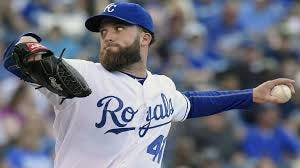
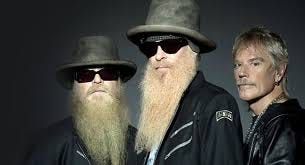
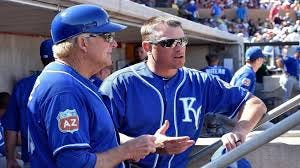
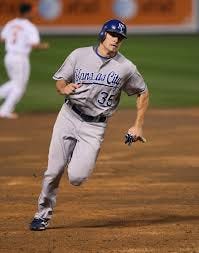

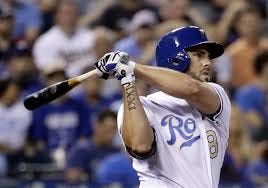


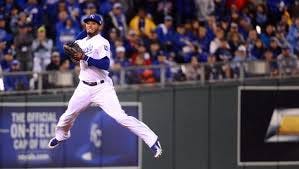
Lee, these stories are great so far. Hope enough interest is there for you to keep them coming.
It's fun to remember those good times.
Thanks for reminding us of an amazing Royals run back in 14' & win in 15'. What a fun time. Wow, do you remember details.